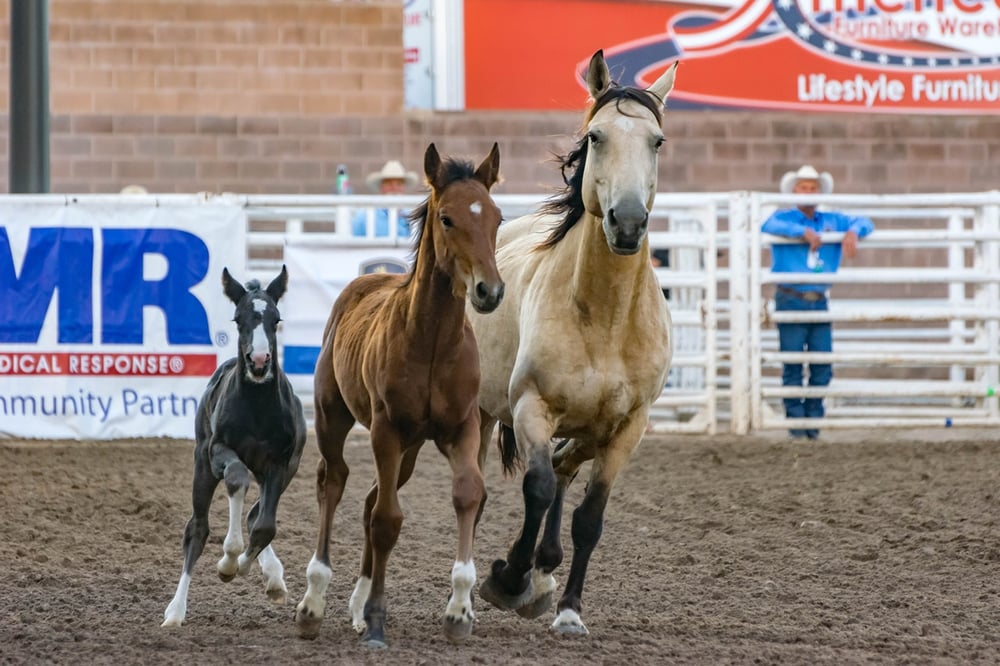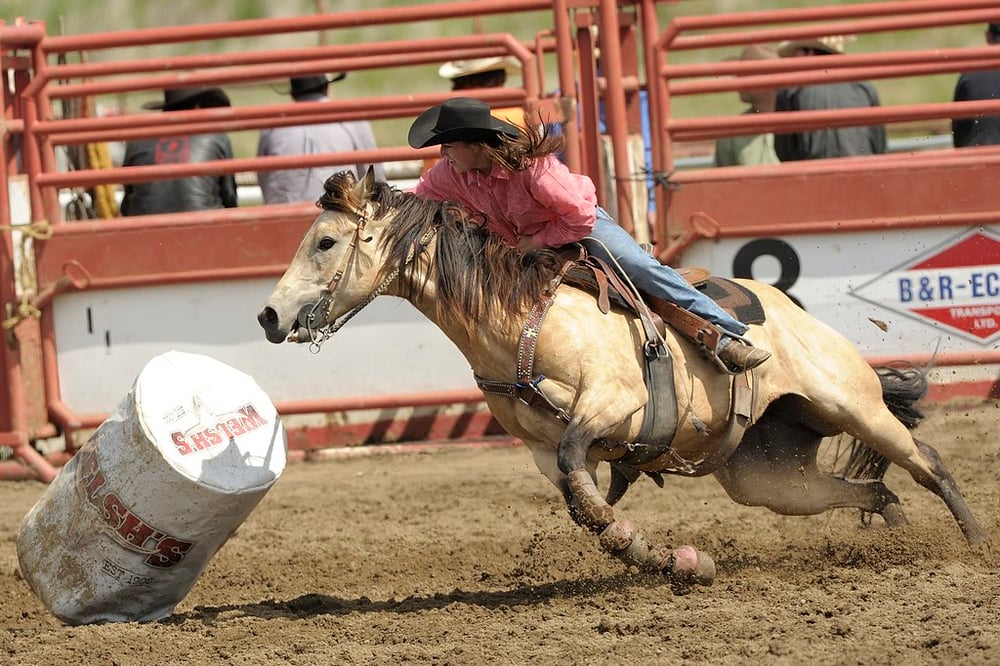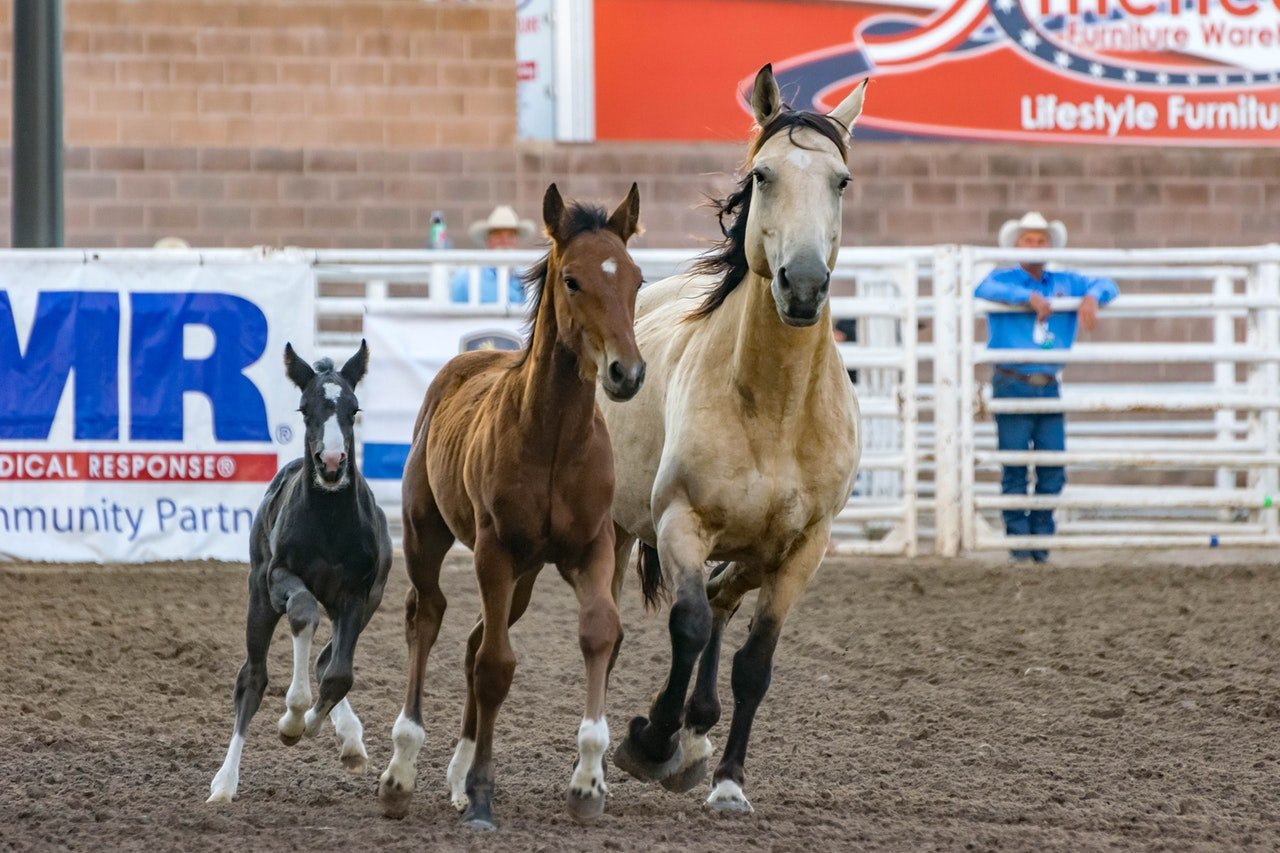Rodeo event arena sizes explained

Whether you’re a seasoned rodeo attendee, or perhaps you’re looking to set up your own rodeo event arena for the first time, it can be helpful to know the rodeo arena regulations and requirements. Because it’s not just the size of the arena that needs to be factored in, something like the material used for the surface is also an important consideration.
In this article, we’ll take a look at the types of rodeo events often held here in Australia as well as important codes of practice that must be followed. We’ll also look at rodeo event arena sizes and guidelines that will ensure you know how big (or how small) your new rodeo arena needs to be.
What is a rodeo in Australia?
Rodeo events have been around since the 1800s in Australia with the earliest recorded events happening in the 1880s – what was once referred to as ‘roughriding’. The more American-influenced rodeo competitions or ‘Bushmen’s Carnivals’ then arose in the early 1900s in New South Wales. These events were sports days that held the main event of campdrafting, but buckjumping, bullock (or steer) riding and bullock throwing also featured as competitions.
Rodeo in Australia has grown over the years to include a wide range of popular events which many people travel far and wide to attend. We’ve listed the more common Australian rodeo events and what they entail below.
Bull riding
Quite possibly the most popular rodeo event, bull riding is also the most dangerous. Bulls are constantly moving so the rider must keep his or her position and balance, by constantly grabbing for new footholds, and continually pulling up on the rope. The more powerfully that a bull bucks and the faster he spins, the more points the ride is worth.
Saddle bronc
Saddle bronc is considered a classic rodeo event for experienced riders. There is nothing to hold onto so the rider can only stay on the saddle through timing and balance. Instinctive reactions are key to determine what the horse will do next, and so that your feet stay in the stirrups.
Ladies barrel racing
This all-female event is a test of not only speed but agility. The rider and her horse must make two turns in one direction and one in the other around three barrels in the arena. These barrels are set in a triangular pattern, and a set distance apart. Winners on many occasions are determined by differences of hundredths of a second!

Rodeo arena-size guidelines
There are many rules involved with professional rodeo events some of which include the size of the arena. As outlined by the Australian Bushmen’s Campdraft and Rodeo Association (ABCRA), these are the sizes recommended for a rodeo arena.
Rodeo arena size: The size of a rodeo arena should be a minimum of 35 metres from bucking chutes to the opposite fence. It should also be a minimum of 70 metres from the time event box, to the opposite fence.
Rodeo arena fence: This needs to be a minimum 1.8 metres high.
Campdraft arena fence: This needs to be a minimum of 1.6 metres high.
It’s important to note that this is only a guideline based on the build of a standard rodeo event arena. The size and requirements of your arena may change depending on the type of rodeo events you will be running. It’s always best to discuss your plans with rodeo arena experts, at the outset.
Important rodeo arena considerations
When building a new rodeo arena, it’s also important to consider the following so that you’re putting your best foot forward for riders that may be using the arena, as well as their horses and cattle. The Australian Bushmen’s Campdraft and Rodeo Association (ABCRA) recommend the following surface materials and guidelines.
Arena surface
If your arena is going to be indoors, then it’s particularly important to pay attention to the surface or ground materials. Many indoor arenas are constructed using concrete floors – this will require more effort to ensure that the ground has enough cushioning for livestock. For arenas that have a hard concrete base, at least 300mm of dampened clay will need to be added on top of this, followed by sandy loam. The clay would then need to be packed while damp to hold its position; sandbags are found to work well followed by dampened clay than sandy loam.
If you don’t have a concrete floor then clay, natural sand or sandy loam would be a sufficient surface for your arena.
Clay: Clay-based soils tend to pack up so work will need to be done to ensure horses can easily grip and turn. The hard surface underneath will need to be broken down approximately 152mm or 178mm. The arena surface will then need to be levelled out.
Natural sand: As natural sand is not a hard surface, this would require water to hold the sand together. The amount of water required will depend on how much sand you’ve used.
Sandy loam: This type of surface will need to be broken down to a depth of approximately 127mm to 152mm (so long as there is no hardpan underneath). The sandy loam should offer enough support to livestock.
Transport, yarding and handling of animals
For any event in New South Wales that uses livestock, it’s essential that they’re handled correctly to minimise distress. In particular, the use of animals in rodeos has implications for arena design, as certain practices must be followed.
The NSW Code of Practice for animals used in rodeo events contains guidelines for the handling of animals used at these events. In relation to rodeo arena design, particular attention should be paid to part 3 of these guidelines:
3.7: Loading and unloading facilities, chutes and yards must be designed and constructed to prevent injury to stock.
3.8: Loading ramps must be wide enough to allow for the passage of mature animals but narrow enough to prevent animals from turning around. The inner rails should be smooth with no sharp projections which may injure animals.
While the overall design of a rodeo arena is important in ensuring that the space is big enough for the events that you will be holding, animal welfare mustn't be overlooked. Factoring in safe and sufficient loading facilities and ramps to your rodeo arena will ensure that your animals aren’t injured.
If you have been wanting to build your first rodeo arena or perhaps you’re looking to upgrade the one that you already have, talk to us about your plans. We’ve been designing arenas of all shapes and sizes for decades and can help you to design the arena that suits your needs and the rodeo events that you will be holding. Even better, our shed builder tool can allow you to design your very own arena, to give you an idea of what the end product will look like. Just click here to try it for free.
-1.png?width=3641&height=660&name=abcshedstransparent2%20(1)-1.png)





